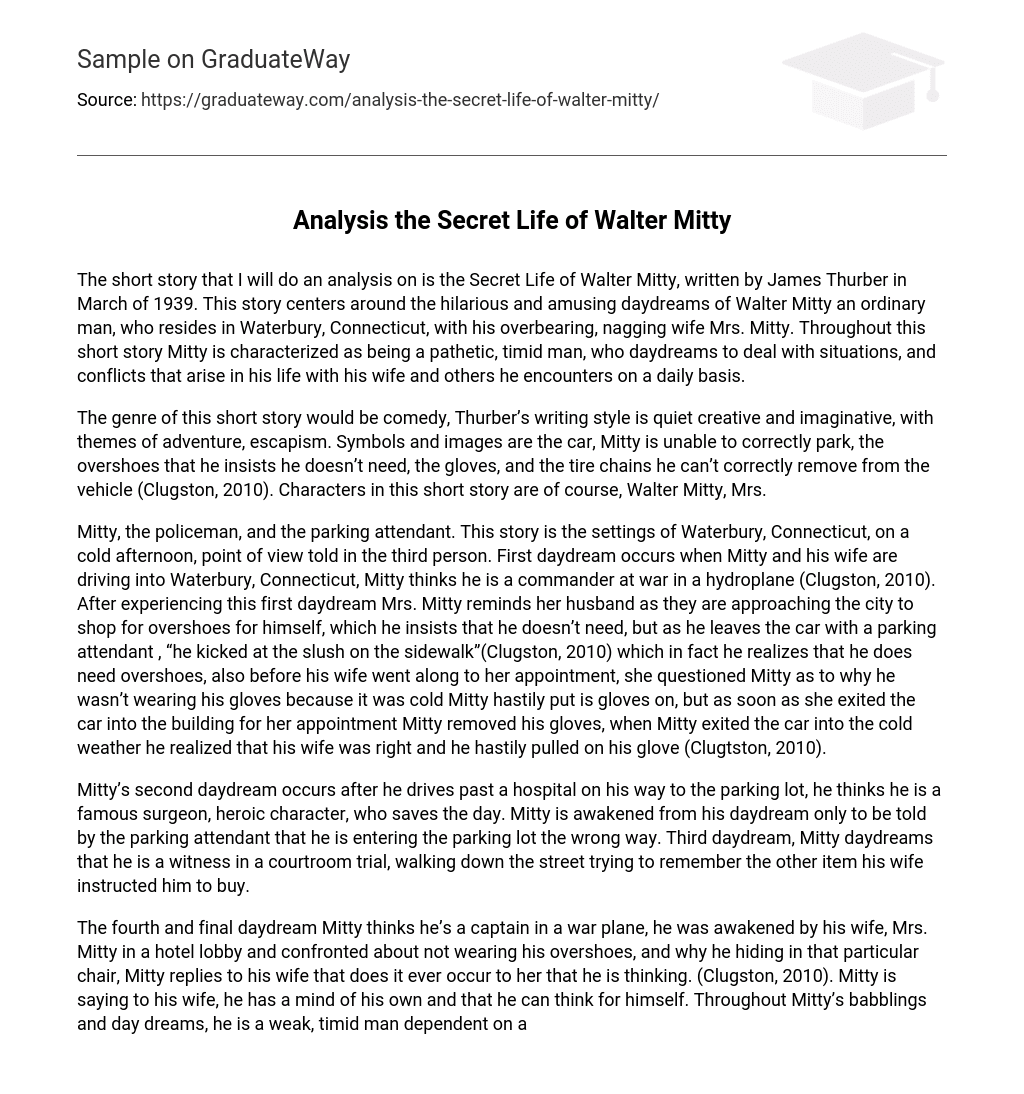The Secret Life of Walter Mitty, written by James Thurber in March 1939, portrays the amusing daydreams of Walter Mitty. Set in Waterbury, Connecticut, the story follows a regular man living with his demanding wife Mrs. Mitty. Mitty is depicted as weak and timid, using his daydreams to navigate through the difficulties he encounters in his relationships and interactions.
In this short story, the comedy genre is apparent and Thurber’s writing style showcases creativity and imagination. The themes of adventure and escapism are also prevalent. Symbolism and imagery are employed to depict Mitty’s challenges, including his struggles with parking, his refusal to wear overshoes, his gloves, and his difficulty removing tire chains from the vehicle (Clugston, 2010). The primary character in the narrative is Walter Mitty, while Mrs. represents another character.
In Waterbury, Connecticut, on a cold afternoon, the story revolves around Mitty, a policeman, and a parking attendant. The narration is in the third person. The first daydream occurs while Mitty and his wife are driving into Waterbury. In this daydream, Mitty imagines himself as a commander at war in a hydroplane. However, Mrs. Mitty interrupts his daydream as they approach the city to remind him to buy overshoes for himself, which he initially refuses. Nevertheless, when he leaves the car with a parking attendant, he kicks at the slush on the sidewalk and realizes that he does indeed need overshoes. Before his wife heads to her appointment, she questions why Mitty isn’t wearing his gloves due to the cold weather. Mitty hurriedly puts on his gloves but removes them as soon as she enters the building. However, Mitty quickly realizes his wife was right when he steps out into the chilly weather and hastily puts his gloves back on.
In Mitty’s second daydream, he imagines himself as a renowned surgeon who saves lives after passing a hospital on his route to the parking lot. However, his fantasy is interrupted when a parking attendant informs him that he is entering the parking lot in the wrong direction. In his third daydream, Mitty envisions himself as a witness in a courtroom trial while also trying to recall the additional item his wife asked him to purchase as he walks down the street.
In Mitty’s final daydream, he imagines himself as a captain in a war plane. However, his wife interrupts him in a hotel lobby and questions why he is not wearing his overshoes and why he is hiding in a specific chair. Mitty defends himself by explaining to his wife that she never considers how often he gets lost in deep thoughts (Clugston, 2010). This suggests that Mitty believes he has an independent mind and can think for himself. Although portrayed as weak and timid throughout his musings and daydreams, it is evident that Mitty relies on the strength of his wife (Mann, 1982). Nonetheless, what resonates most is my personal ability to relate to Mitty’s inclination for daydreaming. While my own fantasies may not be as entertaining or extravagant as his, we all share an inherent desire to escape life’s harsh realities through the act of daydreaming.





